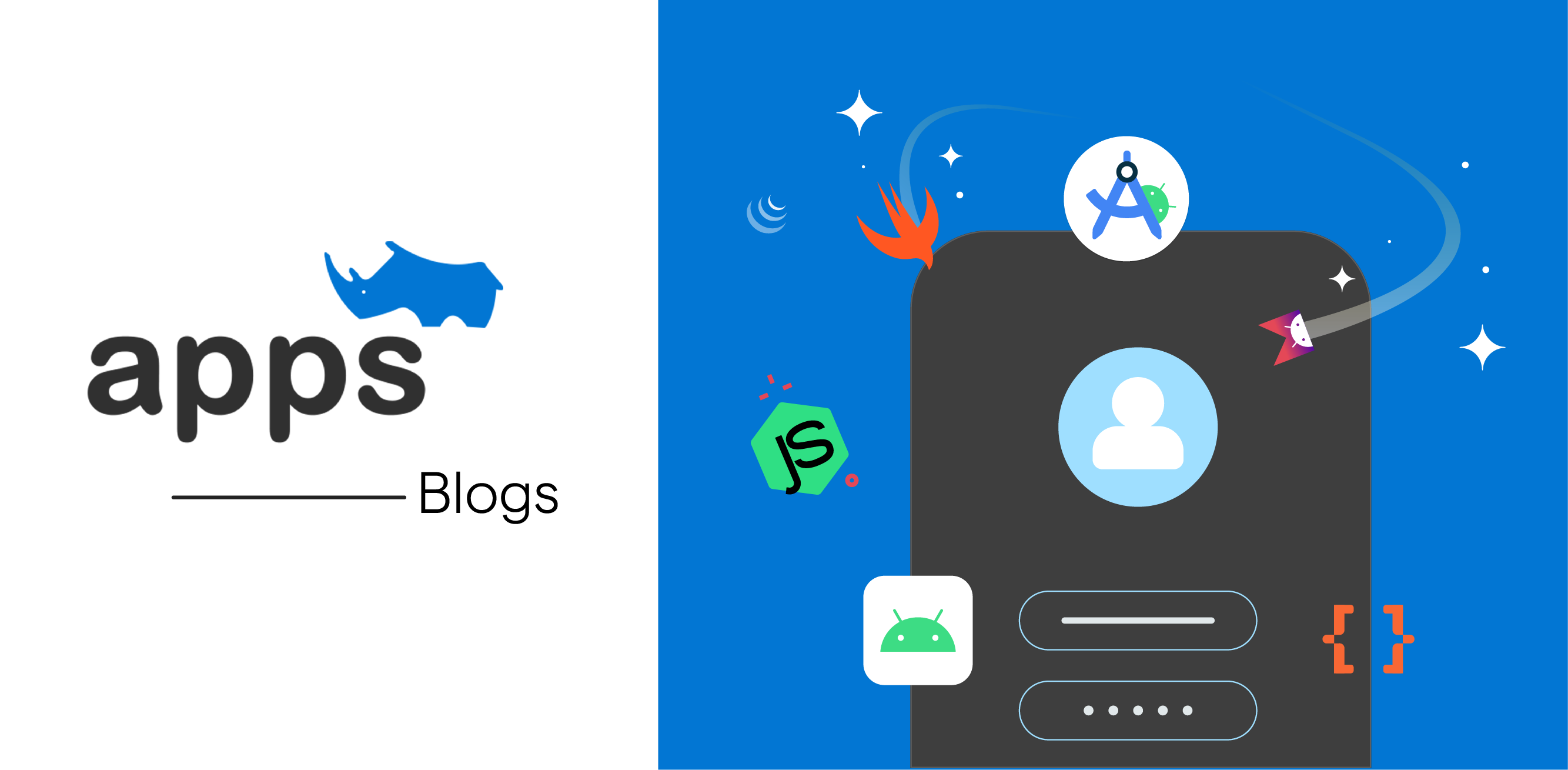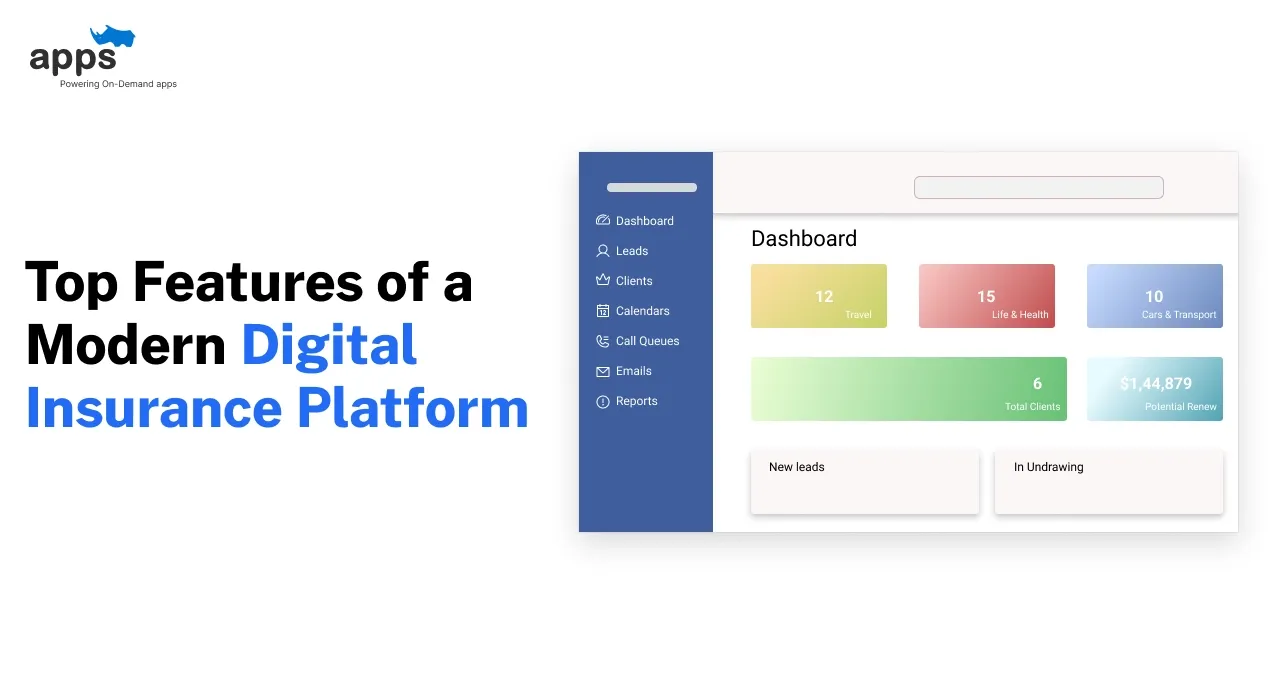- Introduction
- How Multi Restaurant Delivery Software Works: A Step-by-Step Breakdown
- Top Features of Multi Restaurant Delivery Software
- Key Benefits of Multi Restaurant Delivery Software for Owners, Customers & Admins
- Who Should Use Multi Restaurant Delivery Software and Why It Matters
- Comparison: Single vs Multi Restaurant Delivery Systems
- Must-Have Integrations for Multi Restaurant Delivery Software
- How to Choose the Right Restaurant Delivery Software
- Real-Life Use Case
- Why Multi Restaurant Delivery Software is Key to Scaling Your Food Business
- Frequently Asked Questions
Table of Contents
What is Multi Restaurant Delivery Software?
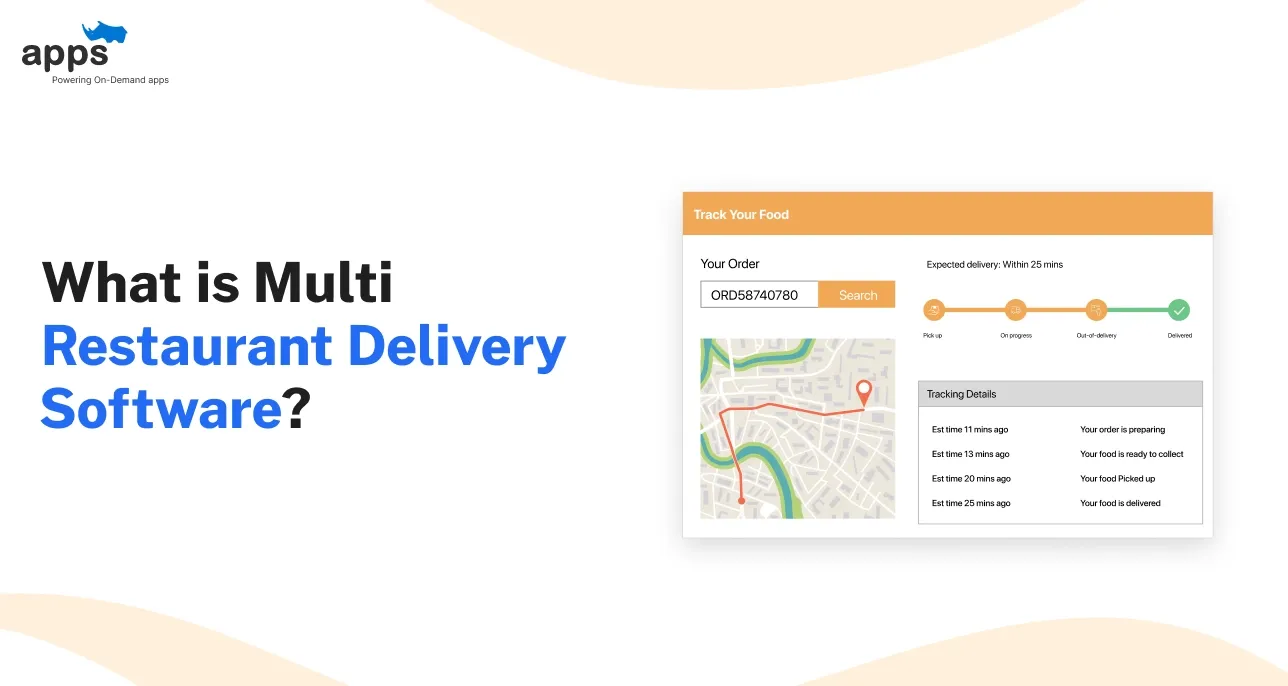
Introduction
Multi restaurant delivery software is an all-in-one platform that helps manage online ordering, dispatch, and delivery for multiple restaurants from one place.
For small food startups and delivery entrepreneurs, it centralizes complex operations. Online food delivery is booming: revenue is projected to grow ~13% annually and reach around $1.65 trillion by 2027. (Source: Statista)
In 2024, global delivery revenues already topped $1.22 trillion.
Consumers love convenience—over 60% of U.S. diners report ordering takeout weekly. (Source: MediaPost)
Data shows more than 60% of restaurants now use software for delivery operations. Industry research finds that about 70% of customers prefer online ordering, underscoring the shift to digital platforms.
A robust multi restaurant delivery software solution can help startups stay organized, save time, and capture this growing market. Read on to see how it works and why it can transform your delivery business.
How Multi Restaurant Delivery Software Works: A Step-by-Step Breakdown
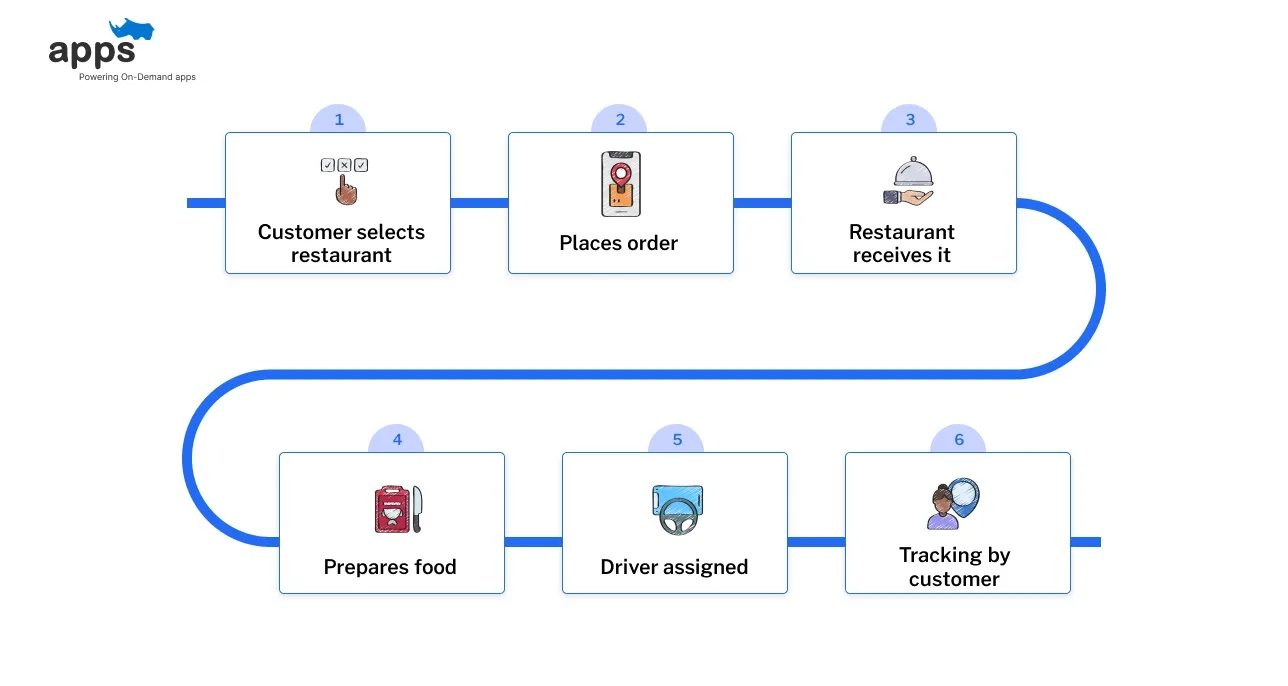 Customer selects restaurant ➝ Places order ➝ Restaurant receives it ➝ Prepares food ➝ Driver assigned ➝ Real-time delivery tracking by customer.
Customer selects restaurant ➝ Places order ➝ Restaurant receives it ➝ Prepares food ➝ Driver assigned ➝ Real-time delivery tracking by customer.
In a multi-restaurant delivery setup, customers use a mobile app or website to pick a restaurant from the list, browse its menu, and place an order.
When an order is placed, the software routes it to the selected restaurant’s kitchen display or online dashboard.
Once the restaurant confirms and prepares the food, the platform’s dispatch engine assigns a driver (either an in-house courier or a contracted rider) to pick up the order.
The driver’s app provides real-time navigation, and the customer can track the delivery progress on their end.
Behind the scenes, administrators use a central dashboard to monitor every step.
- They manage menus for each restaurant, track orders and drivers, and handle payments and commissions.
- Payments from customers flow through the system and are split
automatically between restaurants and the delivery platform.
- All these pieces are integrated into one system, which is a multi-vendor platform that specializes in restaurant delivery software.
- It bundles online ordering, real-time driver tracking, automated dispatch, and reporting into a single interface.
- Every order moves from the customer to the kitchen to the driver with minimal manual effort.
- Even small teams can run a multi-restaurant delivery network efficiently, thanks to real-time updates at each step.
Top Features of Multi Restaurant Delivery Software
Multi restaurant delivery software comes packed with powerful tools that simplify operations for restaurants, admins, and drivers. The key features make it an essential solution for modern food businesses.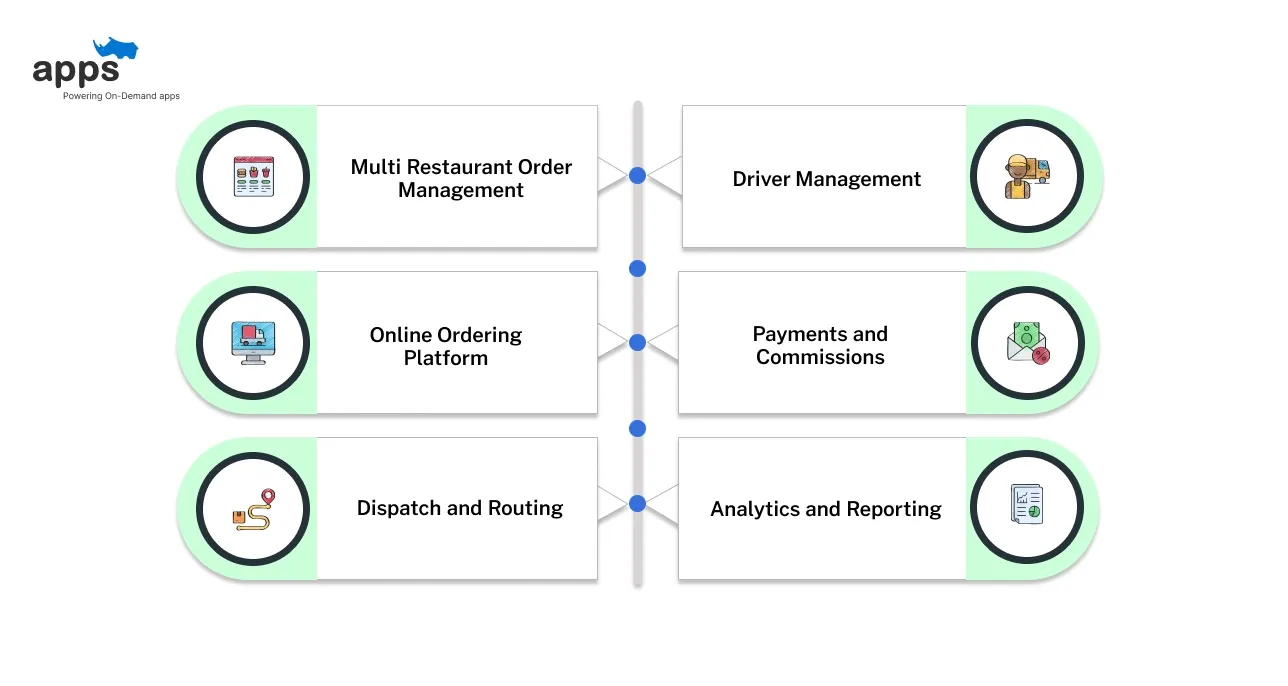
Multi Restaurant Order Management
This feature lets you manage orders from all partner restaurants in a single dashboard.
- You can update menus and prices for each location, view all pending orders, and adjust inventory centrally.
- Everything from menus to inventory stays synced across all outlets.
- Centralized order management is the backbone for any restaurant chain or delivery aggregator, giving complete visibility into every order at once.
Online Ordering Platform
Customers use the online storefront (app or website) to browse menus, customize meals, and check out easily.
- It’s user-friendly and responsive. The interface supports search, filters (like cuisine or price), and secure payment options (cards, wallets, etc.).
- Advanced restaurant delivery software also includes loyalty programs, coupons, and customer reviews to boost engagement and repeat orders.
Dispatch and Routing
Once an order is confirmed, the dispatch engine automatically assigns a driver and calculates the fastest route.
- Real-time routing ensures on-time delivery by considering distance and driver availability. Customers see live status and estimated arrival times.
- This automation cuts delays and keeps everyone updated.
Driver Management
The driver app notifies couriers of new orders, provides navigation, and logs status updates.
- The software tracks rider availability and location. Dispatch rules (like shifts or zones) help managers assign orders efficiently.
- Integrating the driver app keeps drivers and restaurants in sync, ensuring smooth deliveries.
Payments and Commissions
The platform processes customer payments and automatically splits the revenue between each restaurant and the service.
- It supports credit cards, digital wallets, and cash-on-delivery. Commission rates and fees are configured per order.
- Automatic billing and invoicing reduce errors: every restaurant sees earnings, while the platform logs transactions in one place.
Analytics and Reporting
Owners and operators see real-time reports on sales, order volumes, and delivery times.
- Dashboards show key metrics (e.g., top-selling items, busiest hours, and customer ratings). These insights enable data-driven decisions, such as optimizing menus or staffing.
- The analytics feature turns raw numbers into strategies that improve efficiency and customer satisfaction.
Key Benefits of Multi Restaurant Delivery Software for Owners, Customers & Admins
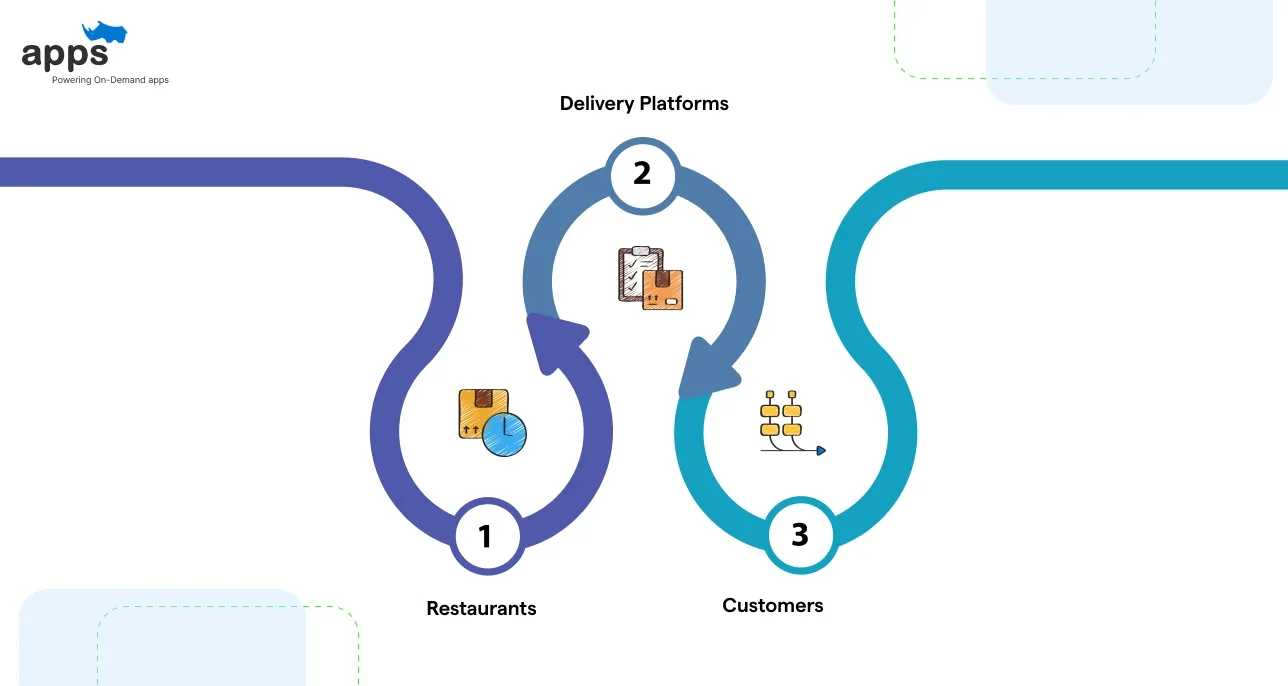
Multi restaurant delivery software delivers unique advantages to everyone involved—restaurant owners, customers, and platform admins. Let’s explain how each group benefits from this powerful restaurant delivery software.
A) Restaurants
Restaurants can significantly expand their reach and simplify operations. With multi restaurant delivery software, each outlet gets a seamless online ordering channel.
Owners control menus and customer communication, without paying high fees to third-party platforms.
Research shows restaurants with an online ordering system see roughly 30% higher takeout revenue.
- Automatic order tracking and integrated payments reduce mistakes and cut costs.
- Over time, restaurants build direct customer relationships and gain valuable data on ordering trends.
- This insight helps tailor menus and promotions more effectively than relying on outside delivery apps.
B) Delivery Platforms
This multi-restaurant platform is an all-in-one restaurant delivery service software solution for delivery startups and aggregators.
Entrepreneurs can launch a branded app without building everything from scratch. They onboard partner restaurants quickly and set their own commission rules.
- The integrated system handles orders, dispatch, and payments automatically.
- Drivers benefit too: optimized routes and real-time updates mean more jobs with less wasted time and fuel.
- A small team can manage dozens of outlets and hundreds of orders daily. This efficiency lets a startup scale quickly and focus on marketing and growth.
C) Customers
Customers enjoy a broad choice of restaurants and menus in a single app.
They benefit from consistent menus, pricing, and loyalty rewards across locations. The platform offers real-time order tracking and helpful notifications.
- Customers also see deals or discounts in one place and can order from multiple favorite eateries with one account.
- For users, this means faster service, more variety, and a smoother ordering experience anytime, anywhere. Satisfied customers often become repeat customers, driving organic growth for restaurants and delivery platforms.
Suggested Reading:
Benefits of Food & restaurant delivery software
Who Should Use Multi Restaurant Delivery Software and Why It Matters
Multi restaurant delivery software is ideal for any business operating multiple kitchen locations or brands.
- Restaurant chains and franchise groups use it to consolidate orders and management.
- Cloud or ghost kitchens running several virtual concepts also rely on this software.
- Entrepreneurs launching a branded delivery platform or local aggregator use it as their backbone.
- Even a single-location restaurant may invest if planning to scale.
In short, any food business expanding across multiple outlets or launching its multi-vendor delivery app can benefit from multi restaurant delivery software.
For example, a hotel chain with multiple on-site restaurants, a university campus with various dining halls, or a multi-vendor food court would all find this helpful tool.
Small ghost-kitchen clusters or shared food-hall operators benefit by offering unified ordering across all their menus.
Even pop-up food festivals, event caterers, and corporate cafeterias with multiple stations can adopt this software to simplify operations.
Comparison: Single vs Multi Restaurant Delivery Systems
Single-restaurant delivery systems are designed for one outlet or kitchen, while multi-restaurant platforms handle many vendors.
The table below compares key aspects of each. For example, a single-store solution manages one menu and set of orders, while a multi-vendor system consolidates all menus and orders centrally.
A basic system may suffice if you only operate one location; growing chains or delivery startups should invest in multi-restaurant software for better scalability.
Aspect | Single-Restaurant Software | Multi Restaurant Delivery Software |
| Ideal Use Case | One restaurant or kitchen | Multiple restaurants, franchise chains, or delivery apps |
| Menu & Orders | Manages one menu and its orders | Consolidates menus and orders from all restaurants |
| Customer Choice | Customers pick one restaurant at a time | Customers browse and order from many restaurants in one app |
| Dispatch & Delivery | Each location handles its deliveries | Central dispatch with optimized routing across all locations |
| Scalability | Limited to a single outlet | Scales easily by adding new restaurants/vendors |
| Setup Effort | Simple to configure for one location | More complex initial setup, but designed for growth |
Must-Have Integrations for Multi Restaurant Delivery Software
Modern multi-restaurant platforms connect with a variety of external tools to streamline operations. Crucial integrations include the following.
- Payment Gateways: Credit card and digital wallet processors (e.g., Stripe, PayPal, Square) for secure online payments and split payouts.
- POS and Inventory: Point-of-sale systems (like Toast, Clover, or Lightspeed) to sync menus and stock levels across restaurants.
- Mapping and Navigation: Services like Google Maps or Mapbox for address validation, distance calculation, and route optimization.
- Notifications: SMS, email, or push notification services (Twilio, SendGrid, etc.) to alert customers and drivers about order status.
- Accounting/ERP: Business accounting tools (QuickBooks, Xero) to automate bookkeeping and financial reporting.
- Analytics and Reporting: BI tools and analytics platforms (Google Analytics, Looker) to gather sales data and trends.
- Marketing/CRM: Platforms like Mailchimp or a built-in CRM for loyalty programs, marketing campaigns, and customer engagement.
- Social Media Logins: Optional integrations for Google, Facebook, or Apple login to streamline user registration and authentication.
- Third-Party Couriers: Integration with external courier APIs or gig-economy networks to supplement in-house delivery capacity when needed.
These integrations automatically cut manual work and errors by syncing menus, orders, and finances across systems.
How to Choose the Right Restaurant Delivery Software
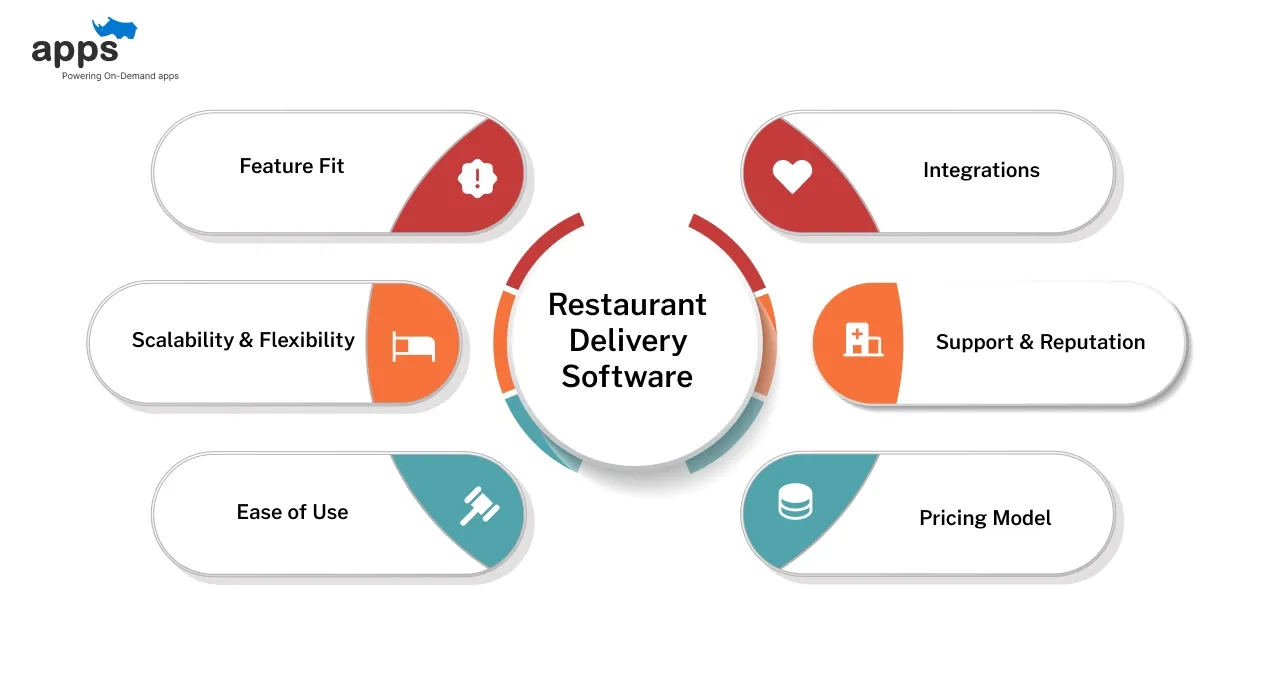
When evaluating multi restaurant delivery software, look beyond basic features. Consider factors like customizability, support, and growth potential. Make sure it fits your budget and operations. Key considerations include the following.
- Feature Fit: Check that the software offers the key capabilities you need (ordering, dispatch, analytics) and can be customized for your brand.
- Scalability & Flexibility: Can the platform handle more orders and restaurants as you grow? Cloud-based (SaaS) solutions scale automatically, while on-premise options may require manual upgrades.
- Ease of Use: The admin and customer interfaces should be intuitive. Easy workflows reduce training needs. Verify that good support and documentation are available for your team.
- Integrations: Ensure it connects with your POS, payment gateways, mapping services, and other tools. Built-in APIs or plugins save time. Without integration, data may need manual syncing.
- Support & Reputation: Read reviews on sites like G2 or Clutch. Good customer support, training, and precise documentation are crucial. Ask for references or success stories from similar businesses.
- Pricing Model: Compare costs: subscription fees, per-order commissions, or per-store licensing. Look for transparent pricing with no hidden fees. Choose a model that fits your budget and sales volume.
Real-Life Use Case
Problem: A regional pizza chain with three outlets struggled to manage rising delivery orders efficiently. Relying on third-party apps meant high commissions, disconnected order queues, and limited access to customer data.
Solution: The chain implemented a branded multi-restaurant delivery app featuring unified menus, real-time order tracking, and integrated promotions. A centralized dashboard displayed all orders across outlets in a single queue, streamlining kitchen operations and dispatch.
Results: Online order volume increased by over 40% within the month. Profit margins improved after eliminating third-party commissions. Kitchen staff reduced delivery mistakes and late orders, while loyalty data enabled targeted deals and campaigns.
Why Multi Restaurant Delivery Software is Key to Scaling Your Food Business
Multi restaurant delivery software provides the tools that modern food businesses need to succeed. It streamlines operations for restaurants and delivery startups, improving order accuracy and customer satisfaction.
As the online delivery market grows, the right platform is crucial.
AppsRhino offers customizable multi restaurant delivery software tailored to your business needs if you're ready to build or upgrade your delivery service.
Custom Food Delivery App Development by AppsRhino
A growing number of restaurants, food marketplaces, and multi-location food chains were struggling to meet customer expectations for seamless, real-time food delivery services.
Many businesses lacked dedicated mobile platforms with modern features like live order tracking, AI-driven recommendations, and multi-store management.
AppsRhino developed a scalable, customizable food delivery app solution for various business models, including single restaurants, food aggregators, and chain stores.
The solution offered branded mobile apps for customers, delivery agents, and managers, alongside an admin panel for central operations.
Clients using the AppsRhino food delivery app solution experienced faster market entry, increased order volumes, and improved customer satisfaction.
The AI-driven personalization features boosted repeat order rates, while real-time tracking and secure payment options enhanced customer trust.
Whether you run a small startup or a growing chain, their expert team provides solutions that streamline operations, enhance customer experience, and boost growth.
Partner with AppsRhino to take your food delivery business to the next level.
Frequently Asked Questions
What is multi restaurant delivery software?
Multi restaurant delivery software is a unified platform that lets multiple restaurants take and manage orders through one system. It includes customer-facing apps, restaurant dashboards, and delivery management tools. This differs from single-location software in that it supports numerous vendors simultaneously. In other words, it’s restaurant delivery software designed for chains or aggregators of many outlets.
How is it different from a single-restaurant system?
Unlike a single-restaurant system (which handles one menu and one location), multi-restaurant software consolidates many menus and order streams into a single dashboard. This restaurant delivery service software allows customers to order from any listed restaurant using the same app, and it provides a centralized back-end for managing multiple kitchens together.
Who benefits from multi restaurant delivery software?
Businesses running multiple food outlets benefit most: restaurant chains, franchise groups, cloud kitchens, and local delivery aggregators. Even a small company planning to expand to various locations can use it. It’s useful for any scenario where customers order from more than one kitchen through the same system.
Can a single restaurant use this software?
Typically, a single-location restaurant doesn’t need multi-restaurant software right away. However, if the restaurant plans to add branches or wants its own branded app, using multi-restaurant software from the start can be advantageous. It future-proofs the business, making it easy to add outlets easily without switching systems.
What features should I look for in the software?
Key features include online ordering (mobile/web) for customers, a consolidated order dashboard for restaurants, delivery dispatch and tracking, payment processing, and reporting. You should also check for integrations (with POS, payment gateways, maps), customization options, and mobile apps for drivers. These ensure the software will meet your specific needs.
Table of Contents
- Introduction
- How Multi Restaurant Delivery Software Works: A Step-by-Step Breakdown
- Top Features of Multi Restaurant Delivery Software
- Key Benefits of Multi Restaurant Delivery Software for Owners, Customers & Admins
- Who Should Use Multi Restaurant Delivery Software and Why It Matters
- Comparison: Single vs Multi Restaurant Delivery Systems
- Must-Have Integrations for Multi Restaurant Delivery Software
- How to Choose the Right Restaurant Delivery Software
- Real-Life Use Case
- Why Multi Restaurant Delivery Software is Key to Scaling Your Food Business
- Frequently Asked Questions


